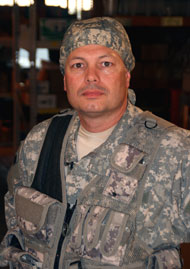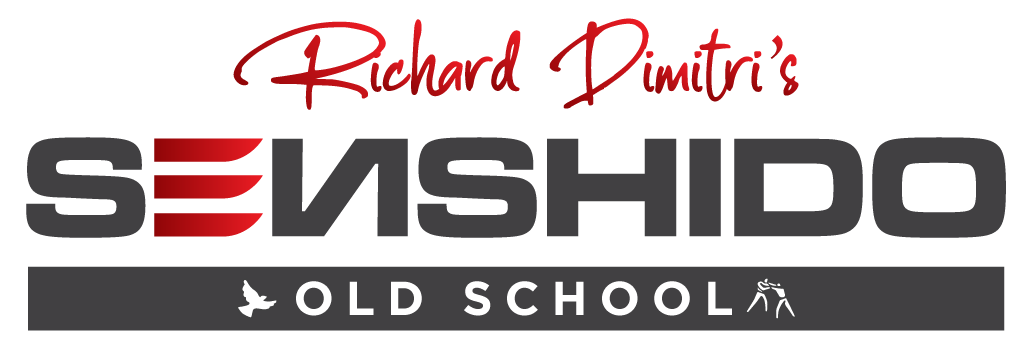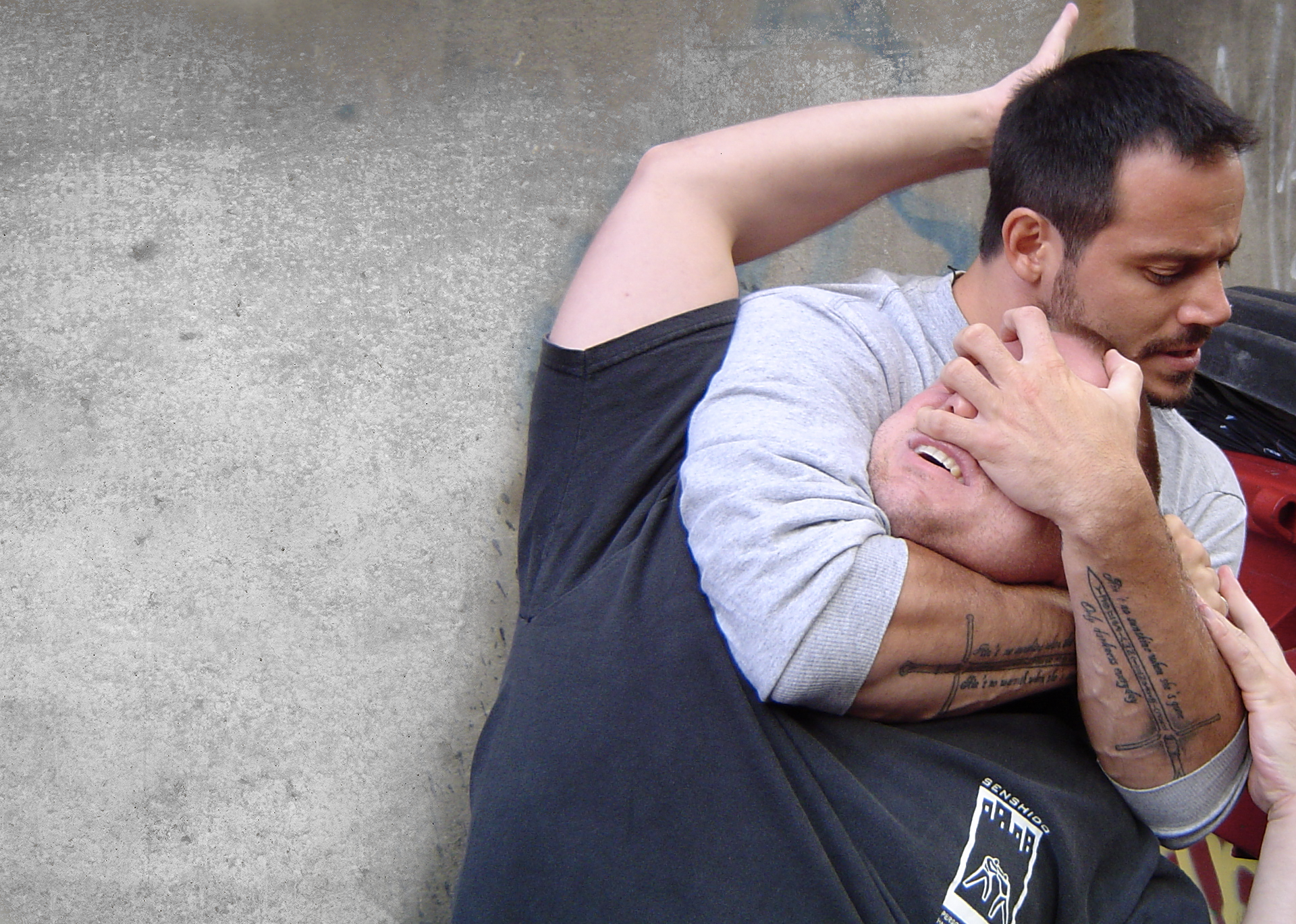 My name is Jim Wagner. Many of you know me from my HIGH RISK column I wrote for Black Belt magazine, a million of you know me from my YouTube channel jimwagnerrbpp, some of you have my books, and others of you are learning about me for the first time here and now. My martial arts journey starts at an early age from some of the world's most renown instructors in the world: Kiyoshi Yamazaki, Dan Inosanto, Richard Bustillo, Larry Hartsell, Ted Lucaylucay and others. Unlike many martial artists I actually made a career of my martial arts skills by becoming a soldier, corrections officer, police officer, S.W.A.T. officer, diplomatic bodyguard, and a counterterrorist for the United States government – a 35-year career.
My name is Jim Wagner. Many of you know me from my HIGH RISK column I wrote for Black Belt magazine, a million of you know me from my YouTube channel jimwagnerrbpp, some of you have my books, and others of you are learning about me for the first time here and now. My martial arts journey starts at an early age from some of the world's most renown instructors in the world: Kiyoshi Yamazaki, Dan Inosanto, Richard Bustillo, Larry Hartsell, Ted Lucaylucay and others. Unlike many martial artists I actually made a career of my martial arts skills by becoming a soldier, corrections officer, police officer, S.W.A.T. officer, diplomatic bodyguard, and a counterterrorist for the United States government – a 35-year career.
I’m still a warrior, although you’d call it a “weekend warrior,” but one of my most recent missions was protecting Marine One, the helicopter of President Barak Obama, with a U.S. Marine team, along with other aircraft during one of his visits to Los Angeles. Black Belt magazine named me Self-Defense Instructor of the Year in 2006, Budo magazine of Europe inducted me into their martial arts Hall of Fame the same year, followed by the Masters Hall of Fame in 2011, and then the Martial Arts History Museum in 2013. Why? Because I helped modernized the way people learn self-defense today, and many people have labeled me the "father of the reality-based self-defense movement." As a Defensive Tactics and Combatives instructor for the past 23 years I’ve had the privilege of training some of the most elite police and military units in the world: German counterterrorist team GSG9, the Israeli National Police Academy and Israel Defense Forces Bahad 8, Argentinean G.O.E, Brazilian G.A.T.E., Finnish National Police Academy, NATO Special Forces Base Pfullendorf, FBI S.W.A.T., U.S. Marshals Special Operations Group, U.S. Coast Guard Boarding Teams, U.S. Border Patrol, U.S. Air Force Security Forces, U.S. Army Special Reaction Teams, Mexican Special Operations teams, and the list goes on.
When Richard Dimitri contacted me asking me if I’d answer questions for a Blog interview I was honored. Unless you have been reading Black Belt magazine (USA), Budo International (Europe), or Blitz magazine (Australia), you may not know the modern history of the martial arts. For when I first started studying the martial arts in 1977 there was no mixed martial arts, no integrated firearms training, no talk of the O.O.D.A. Process, no combat first aid for post-conflict training, no courtroom survival, no “know your enemy,” the criminals, like General Sun Tzu advised, no learning to talk with the police after a crime, no understanding of physical evidence, none of it. In fact, jumping from one system to another was considered taboo. Bruce Lee was the first to start breaking that barrier in the Western World with his small group. Dan Insoanto implemented Lee’s concepts by teaching Jeet Kune Do, and as part of that early group I took it all to the next step: integrating modern weapons (firearms, chemicals, explosives, taser, etc.), criminal and police techniques and tactics, and introducing the first system in the martial arts dealing with terrorism called Terrorism Survival. So now, let’s get into the questions.
Q1: What significant change(s) on a human level, have you gone through over the last decade in direct relation to your work and how has it, if any, changed the way in which you teach/instruct?
The last decade, and add two more years added to that, have seen extreme changes in the martial arts on so many levels, and I have had a big part in it, which is well documented in dozens of police and martial arts publications worldwide going all the way back to the first article about me in SWAT magazine in the November 1988 issue. However, let’s start on January 21, 2003 was when I went public with my Jim Wagner Reality-Based Personal Protection system. Before that I was only teaching police and military exclusively. Yet, I must go back a little father back in time to adequately explain how this last decade has had such an affect on me. First, as I mentioned before, I started writing for Black Belt magazine in 1998, and my monthly column HIGH RISK first débuted in the February 1999 issue, but was on the stands in January. Take a look at any martial arts magazine in the world published before this date and you will see virtually nothing about modern fighting: little about criminals, very little about police techniques and tactics, input from military personnel had disappeared for twenty years, and there was nothing about terrorism. Krav Maga was just starting to come on the scene, but the martial arts community did not know about “reality-based” systems. That is to say, systems designed to deal with actual criminals and terrorists, including modern weapons and tactics. Because of my unique background, and my column, I opened the floodgates to a whole new way of training in the martial arts, or literally translated, “war arts.” I started the movement, and like-minded instructors followed my lead.
Since I am credited as the “father of the reality-based movement,” I was breaking new ground and going in directions nobody had gone before in the martial arts. I introduced a lot of new ideas that were unheard of in martial arts schools around the world: paintball guns and then Airsoft, stage blood for realistic scenarios, Terrorism Survival, costumes, stage make-up, Criminal Chemical Defense, surviving a sniper, angles of movement during an Active Shooter, and so many other techniques and tactics I had picked up over the years. Those ten years of spreading my system around the world, literally, was exciting, exhausting, stressful, plenty of ups and downs, and a lot of nights in hotel rooms and lonely overseas flights back home.
Q2: Is there a particular incident/occurrence/situation you recall having directly experienced/been involved in that has deeply & emotionally touched and/or altered you and your perceptions of the world in general?
I had been a martial artist since I was 14-years-old. I studied Tae Kwon Do, Karate, Kung-fu, Judo, Filipino Kali, Chinese kickboxing, Wing Chun, and then I became a Private in the United States Army. What started to change my direction in the martial arts was the way the Army did training. Sure, they taught plenty of techniques and tactics, but after that most training was scenario-based. They spend a lot of dollars to make things look and feel real. I saw this realism, and scenario-based training, lacking in the traditional martial arts from which I came. What made me depart from the traditional martial arts altogether was when I was a corrections officer in a jail and a prisoner tried to kill me. Right then and there I realized that my martial arts had been good for preparing me for the “ego fight,” but not against the “life and death fight.” I guess you can say that this prisoner knocked some sense into me.
Q 3. Have you ever thought of quitting the game altogether? If yes, why? And if you were to at this stage in your life (today) do something entirely different, what would it be?
When I started the Jim Wagner Reality-Based Personal Protection system in 2003 I had a lot of things going for me. For several years I had little competition in what I was teaching, I was a fairly well known name in the martial arts world at the time because of my articles, videos, and books through Black Belt magazine in the USA and Budo International in Europe. Yet, despite my advantages it was very hard to make a good living at it compared to full time law enforcement. When I was wearing a badge there was a regular paycheck coming in and lots of benefits, but teaching self-defense for a living was a roller coaster ride; extreme highs and lows. During those rough times I thought about quitting a few times, but just as I was starting to look for a different career all of a sudden new opportunities came my way. Perhaps it was a military unit that wanted training one month, and then the next month two different police departments wanted me to teach their instructors. Or, I’d end up doing a television interview, or being on the cover of a martial arts magazine, and business would be booming again.
If I had to do something else with my life, that is to say not teach the martial arts at all, I’d go into writing full time. I just wrapped up my autobiography called The Greatest Martial Arts Story Ever Told, which is now on sale on Amazon. I have a couple of more books coming out this summer. I enjoy putting my thoughts down on paper or digitally.
Q 4. Do you feel you were proverbially ‘born’ to do what you do, that this was your calling?
I was not “born to be” a martial arts instructor. When I was a boy, I like many American boys, wanted to be an astronaut, soldier, adventurer, and because I had artistic abilities – an artist. I ended up in the martial arts like most people do, and that was to learn self-defense to survive the big bullies at school. One thing led to another, and I ended up teaching self-defense. Once I discovered that people liked the way I taught, and that they appreciated my easy realistic approach, I became more passionate about it, and eventually it became a career.
Q 5. How has your work affected your personal life in regards to the relationships with those outside our field/profession? (Professional, personal, familial, romantic, etc.)
The martial arts was the catalyst that motivated me into becoming a soldier, and then a corrections officer, then a cop, then a S.W.A.T. officer, then a bodyguard for the Sheriff’s Department, then a counterterrorist fighting the Global War On Terrorism, then a self-defense instructor, and finally a soldier again. I’ve been serving as a Reservist for the past nine and a half years. Obviously, this warrior mentality makes me view the world a bit differently than others. For example, I can have a good time at a party like everyone else, but I scan the area for possible danger. I look for signs of trouble. I’m a trained observer. Instead of sitting just anywhere in a restaurant I prefer a booth or table near a wall, preferably near an exit, and facing the majority of people – facing “center mass” as it were. I am less trusting of strangers, I know that even good colleagues and good friends can stab me in the back after years of trust, and I am disappointed in weak people. The martial arts, and a life of violence or the constant possibility of violence, has made its mark upon me. I won’t argue that. Is that a bad thing? I don’t think so. I’m just more aware of people and situations than most.
Q 6. Do you have any regrets at all? If yes, which is the one that haunts you the most?
Like any person I have some regrets. Nothing earth shattering, but small stuff. Yet, I look at my triumphs and tribulations as life building experiences. I know that I have learned from my mistakes, and that is what counts the most. Repeating mistakes is what would lead to haunting regrets.
Q 7. What are your proudest moments/achievements in both your private and professional lives?
My greatest achievement is being married for almost 30 years in a society that no longer knows how to keep their word or stay committed. I live in a very self-center culture now, and it’s all about “me.” When I stood before God and man at and repeated the words, “For better or worse, until death do us part,” I had every intention of keeping that promise, and I have. Marriage is not easy. It is not a feeling. It is a commitment. Commitment develops into a deeper love than the romance that was at the beginning.
As far as my professional achievements go, as a martial arts instructor, it is hearing stories from my students how I changed their lives, or even helped save their lives. For example, let me bring up my French student Julie Duranton. She was a shy teenager when she took her first self-defense course from me. Class by class I saw her come out of her shell and become more confident. The following year at another seminar in Paris she dreaded talking before a group, and so I had her teach a technique she knew to the other students. At first she refused, but then she reluctantly gave it a try. By the following year she was one of my assistant instructors, and her parents thanked me for giving her boldness and confidence. She was a changed person. Then, last year I got an email from Ryan Leef who was one of my students in British Columbia, Canada who was eventually elected as a Member of Parliament. In this email to me he thanked me for helping save “the entire Canadian government.” It turns out that when every major official of the Canadian government, including the Prime Minister, was in session on October 22, 2014 a terrorist stormed the building with a rifle trying to kill as many people as he could. Just outside the nation’s capital he had already killed a soldier and had a shoot out with the police. Ryan, who had taken my Terrorism Survival course a few years earlier, in 2009 to be exact, was the first one to react to the gunshots and started barricading the doors of the chambers. Others followed his lead. I had set up the exact same terrorism scenario when he was my student, and he was doing what I had taught him in a real situation. Next, he prepared to ambush the terrorist if he managed to penetrate into the room. He had a flagpole with a spear at the end with the determination, “Nobody is going to get through that door alive!” These stories, and more, are in my new book. But, I’ve also heard from my students from the battlefields of Iraq and Afghanistan, from police officers in New York City and Amsterdam who survived an attack, and even a housewife I had taught sent me an email stating that she was able to do the right thing when a man approached her at a gas station to harass her. I know through my teachings I have helped to keep a lot of people safe, and even more aware of dangers. Over the years I’ve been given a lot of awards, ribbons, medals, and inducted into Halls of Fame, but hearing actual survival stories from my students is the ultimate reward for me.
Q 8. How do your friends and family outside the industry/self defense/martial arts world view what you do for a living? What are your thoughts and feelings about it?
My stories are the stories my friends and family want to hear. It’s definitely not the life of a banker or an accountant. I’ve lived an exciting life, and people like that kind of stuff. Why are there so many cop shows and movies? Whether it’s about a car chase of a murderer I had back when, teaching a counterterrorist team in Europe, meeting the President of the United States in the Oval Office, or invited to meet Pope Francis at the Vatican last November, I have some very colorful images I put into people’s head. I’m never at a loss for a good story. Yet, honestly, I would not recommend my life, or life style, for anyone. It was too dangerous, too unstable, and too unpredictable. I’m just thankful I’ve made it this far.
Q 9. How often do you find yourself going against what you preach and teach, after all, we’re all human, we all have our ‘bad days’ and the like; and how often are you aware of it enough in the present moment to catch yourself do you think?
Most martial artists will never use their martial arts skills in a life and death fight. In fact, most martial arts instructors have not been in actual gunfights, knife fights, gang fight, or the like. Yes, perhaps they have been in an “ego fight,” the proverbial bar fight or shoving match, but never eye to eye with a criminal or terrorist who intended to kill them. Unfortunately, I have, and more times than I’d like to remember. As such, what I teach to my students is what has kept me alive in the jails, in the streets, and on counterterrorist missions. I truly do practice what I preach and teach. That said, the question is “have I made tactical mistakes before?” Yes, and some of them have almost cost me my life. It’s all part of the Conflict Cycle. The main thing is that I learn from my mistakes, adjust my training accordingly, and prepare myself mentally and physically for the next time I may face it. I also pass on this knowledge to my students. That’s the good thing about my past. I have actual experiences, and not just theory. I know what it is like for a blade to come at my neck or chest. I know what it feels like when the bullets are whizzing past. I’ve had to give first aid to injure or dying people. I know the anxiety of being outnumbered. I’ve had the thoughts, “Am I going to survive this?”
Q 10. What now? Where do you go from here? Where do you see yourself in 10, 20 years both on a personal and professional level?
I am now over 50-years-old and I know I am coming to the end of both my military career and my self-defense instructor career. Moving and shooting is a young man’s game for law enforcement and military. Even if I want to stay out in the field, because of my high rank and my age those above me will eventually put me behind a desk or have me “lead from the rear.” It is inevitable. Knowing this is going to happen I am preparing the next generation of soldiers to take over in my little part of the world. I’m trying to pass on my knowledge and experience, along with traditional values that are ever eroding in my country. And, if they are eroding in society, that means they are eroding in the military as well.
Regardless of the future I will always train myself, family members who want to learn, and some close friends in the martial arts, but I don’t see myself teaching publically in 10 years. I may be mentoring or encouraging those teaching my system in a decade, but my life then will definitely not be as it is today. I’ve always used the expression, “nothing lasts forever.” I wanted to be on a S.W.A.T. team, and I did it. I wanted to chase down criminals and drag them to jail, and I did it – plenty of it. I wanted to go around the world teaching, and in so doing I’ve been on every continent except Antarctica doing it. I wanted to have my own martial arts school, and I’ve had three in my life, and many teaching under my name in their own schools. When it comes to the martial arts, I’ve done it all, or at least more than most. However, I am a religious man. And, as much as I have enjoyed my life, I have always allowed God, Jesus Christ, to guide my life. I pray to Him daily, sometimes a few times a day. I have definitely prayed to Him when staring into the face of death, or finding myself in some very tight situations. So, in 10 years or 20 I know He will take care of me, be it in this life or the next. I’ve already lived long enough to see a few of my instructors pass away. I know my day will come eventually. I may not make it to the numbers 10 or 20. Again, “nothing lasts forever.” Not in this life anyway. However, I believe that the soul does last forever, and this life is all about the struggle between good and evil, right and wrong, Heaven and Hell, and God or continued rebellion. I believe that the Bible is true, for a lot of reasons, and I am putting all my eggs into that basket. As a martial arts instructor I have taught Christians, Buddhists, Muslims, Hindus, atheists, straight, homosexuals, sane and borderline insane people over the years. To every single one of my students, regardless of their beliefs or background, I gave each one of them my very best. Anyone who has ever been in one of my classes or seminars could testify to that. I treated the housewife wanting to learn self-defense no differently than the high-speed low drag counterterrorist operator from an elite tactical team. But for me personally, the most important fight, and the one I wish I could have shared with all of my students more, is the one that determines where you’ll be for eternity. For me it has always been about John 3:16 (crack open a Bible, go to the New Testament, then to the Gospel of John and check it out or just Google it). It is the God’s plan for you, should you choose to believe it, in a nutshell.
To wrap up this interview for Rich, I encourage you to read my new book The Greatest Martial Arts Story Ever Told sold on Amazon in paperback or Kindle version, soon to be on iTunes. It is actually three books totaling over 1,500 pages and tons of photos. If you really want to know how much Reality-Based Personal Protection opened the doors for Krav Maga, KAPAP, Russian Systema, Combatives, and the rest, then you’ll enjoy reading this fascinating history. If you want to know about martial arts training in the police academy, in different militaries and police agencies around the world, and for the Global War on Terrorism, I’ll take you inside that world as well. If you want to know how I brought KAPAP out of Israel you’ll get a front row seat. And, God help you if you become well known and respected as a martial arts instructor, for you will have enemies coming out of the wood work like you can’t believe – enemies from the other side of the globe you have never met. Oh yes, I go into detail about the seedy side of the martial arts community, for I have been a target since day one. Even if history and cool fighting stories may not be your thing, you’ll learn a ton of techniques and tactics that will give you great ideas for your own training just by reading it. So, I’ll leave you with the Jim Wagner Reality-Based Personal Protection motto – Be A Hard Target.





0 Comments
Leave a comment